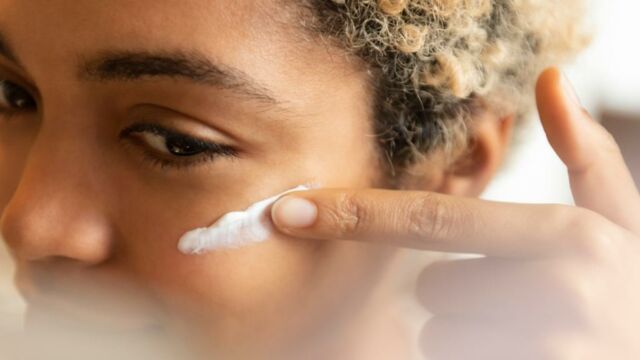Purging vs breakouts: How to tell the difference

So you’ve started using a new skincare product, and you notice a new eruption of acne. Could this be purging, or are you just breaking out?
When you start using a new skincare product, it may cause your face to break out in what’s known as a purge. This concept has been debated in the skincare world, but purging isn’t a myth, and it isn’t your enemy either. In fact, purging could even be a sign that your active ingredients are doing their job.
Discover our latest podcast
What causes skin purging?
Purging often occurs when introducing a new product into your skincare routine, such as a retinoid or chemical exfoliant. These ingredients can speed up the rate of skin cell turnover, a process that usually happens every 28 days. This increased turnover can then push all the existing dirt and oils to the skin’s surface, resulting in a small breakout known as purging.
More under this adMore under this adWhat does skin purging look like?
When you start a new retinoid or chemical exfoliant, it may seem like the products are breaking you out. But, the purging process is actually just bringing pimples to the surface that were already waiting below the skin. Those pimples would have one day made themselves visible, but purging just speeds the process up.
Acne caused by purging can typically be both inflammatory and non-inflammatory. Types of non-inflammatory acne include whiteheads and blackheads. Meanwhile, inflammatory acne consists of all those angry red bumps such as papules, pustules, cysts and nodules.
More under this adMore under this adEssentially, breakouts caused by purging look just the same as any other breakout. But, if you find your purging looks similar to a rash or is itchy, burning or scaly, then you may be having an allergic reaction. In this case, it is best to discontinue the use of your product.
How to tell the difference between purging and a breakout
Despite purging and your run of the mill acne looking the same, there are some ways you can tell the difference between them.
More under this adMore under this adDuration
As purges are due to the increase in cell turnover, the lifecycle of breakouts is also much shorter. Board-certified dermatologist, DrSapna Palep of Spring Street Dermatology in New York City, explained to Byrdie:
The life cycle of the acne (that occurs during a purge) is faster than a regular breakout. It will heal much quicker than in a typical breakout. If you start a new product that is known for purging, but the breakouts are lasting longer than 4-6 weeks, then it may signal the product is not working for you or actually making things worse.More under this adMore under this ad
Location
Purging brings existing acne to the surface to flush it out, so you should experience purging in the same areas that you’d typically have acne, such as the chin and nose.
If you find yourself breaking out in unusual areas of the face, then you may be experiencing some clogged pores or even an allergic reaction.
More under this adMore under this adActive ingredients
When trying to distinguish a purge from a regular breakout, the last thing to consider is the active ingredients of whatever product you’ve just introduced to your routine. Purging is generally caused by retinoids (vitamin A), chemical exfoliants (alpha and beta hydroxy acids) and sometimes mild exfoliants like vitamin C. So, if your skin breaks out after introducing a hyaluronic acid or oil, then you’re probably not purging.
How to treat skin purging
There’s not much to do when it comes to treating a purge. You just have to wait it out. Luckily, purges don’t usually last very long. However, if you want to reduce the severity of your purge, there are some tips to keep in mind.
More under this adMore under this ad1. Be gentle!
Be careful not to pick at your purge or attack it with harsh scrubs and pimple treatments. Being rough with your purge could instead lead to more irritation and a bigger breakout.
2. Take it slow
When using active products for the first time, introduce them into your routine slowly. Start by using your new product just once a week, then twice, until you’re using it every other day. Otherwise, try sandwiching your new skincare active by using it in between two layers of moisturiser.
More under this adMore under this ad3. Protect your skin
During a purge, it’s even more important to take care of your skin. Make sure you’re hydrating both inside and out andusing an SPF whenever you’re exposed to sunlight.